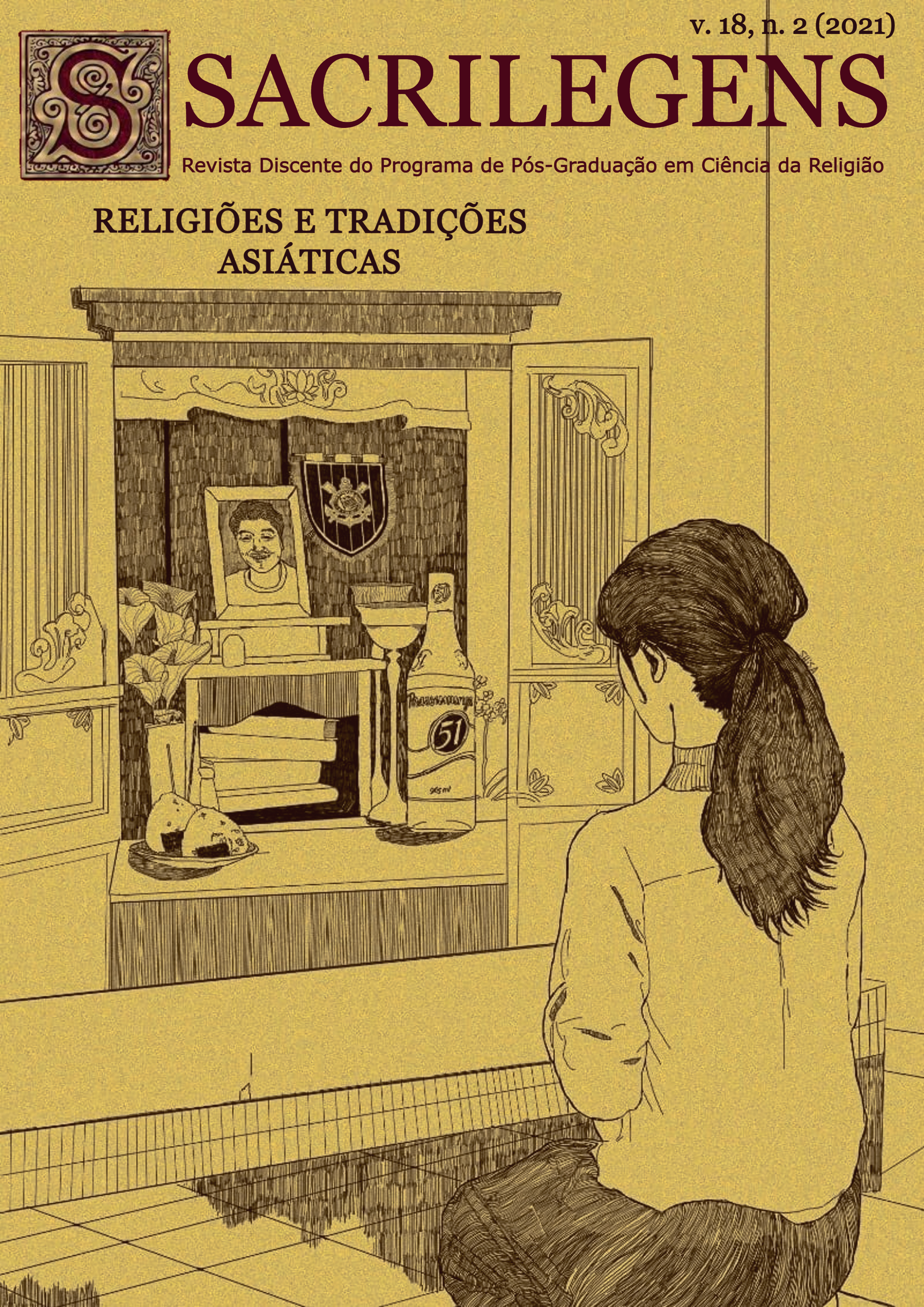O círculo sagrado dos sentidos: a abordagem tântrica de Abhinavagupta ao Bhagavad-gītā e o conceito de spanda (“pulsação”)
DOI:
https://doi.org/10.34019/2237-6151.2021.v18.35764Keywords:
Abhinavagupta, tantra, tradição, sentidosAbstract
The aim of the article is to address some of the imagery and meanings attributed to the sensory faculties in the Kashmīr Shaivism tradition. The first section will analyze the “tantric” reading that the great Kashmiri Philosopher, Abhinavagupta, performed on the Bhagavad-gītā, aiming at extracting what he considered to be the essential meaning of this vedic text: the correlation between sacrificial action and sensory playfulness. Afterwards, the subject will be addressed from a broader intertextual standpoint, mainly regarding the soteriological teachings of the tantric School called Spanda (“Pulsation”). It is expected that the contribution of the paper lies on the treatment of textualities that present a crucial conceptual counterpoint to the recurrent devaluation of the body and its sensoriality in the field of Religion.
Downloads
References
ABHINAVAGUPTA. Gītārtha Saṁgraha. Abhinavagupta’s Commentary on the Bhagavad Gītā. Tradução: Boris Marjanovic. Varanasi: Indica Books, 2004.
ABHINAVAGUPTA. Tantrāloka. Disponível em: <https://www.sanskrit-trikashaivism.com/en/tantraloka-introduction-trika-scriptures-non-dual-shaivism-of-kashmir/581. Acesso em: 04. set. 2021
DYCSKOWSKI, Mark S. G. The Doctrine of Vibration. An Analysis of the Doctrines and Practices of Kashmir Shaivism. Delhi: Motilal Banarsidass, 1989
FIGUEROA, Oscar. El sentido “esotérico” de la Gītā: la lectura tántrica de Abhinavagupta. In: FIGUEROA, Oscar (ed.) La Bhagavad-Gītā. El clásico de la literatura sánscrita y su recepción. Ciudad de México: Universidad Nacional Autónoma de México, 2017.
FLOOD, Gavin. The Tantric Body. London: I.B.Tauris, 2006.
LOUNDO, Dilip. O ritual na tradição védica: abertura, pluralidade e teleologia. In: Gnerre, Maria Lucia. (Org.). Cultura oriental: língua, filosofia e crença. (1ed.) João Pessoa: Editora da Universidade Federal da Paraíba, 2012, p. 31-56.
LOUNDO, Dilip. A hermenêutica transformativa da Bhagavad Gītā. In: SILVESTRE, Ricardo Sousa (org.). Filosofia e teologia da Bhagavad Gītā. Hinduísmo e Vaishnavismo de Caitanya. Curitiba: Juruá, 2015, p. 65-82.
LOUNDO, Dilip. The meaningfulness of “The Meaninglessness of Ritual”: [an advaita Vedānta perspective on] Vedic ritual (yajña) as narrative of renunciation (tyāga). In: Horizonte, Belo Horizonte, v.16, n.51, set./dez. 2018, p.1152-1176.
LOUNDO, Dilip. The Indian Aesthetics of Emotions (Rasa): non-duality, aesthetic experience and the body. In: Revista Terceira Margem, Rio de Janeiro, v.25, n.46, mar./ago. 2021, p.51-66.
SANDERSON, Alexis. Śaivism and the Tantric Traditions. In: The World’s Religion. London: Routledge, 1988, p. 660-704.
SHARMA, Arvind. Abhinavagupta Gītārtha Saṅgraha. Leiden: E. J. BRILL, 1983
SINGH, Jaideva. Pratyabhijñāhḥdayam. The Secret of Self-Recognition. Delhi: Motilal Banarsidass, 2011.
SINGH, Jaideva. The Yoga of Vibration and Divine Pulsation. A translation of the Spanda Kārikās with Kṣemarāja’s Commentary, the Spanda Nirṇaya. Delhi: Motilal Banarsidass, 1992.
SINGH, Jaideva. Vijñānabhairava or Divine Cosnciousness. Delhi. Motila Banarsidass, 1979.
SKORA, Kerry Martin. The Hermeneutics of Touch: Uncovering Abhinavagupta’s Tactile Terrain. In: Method and Theory in the Study of Religion 21. Leiden: Brill, 2009, p.87-106.
WALLIS, Christopher. Tantra Illuminated. The Philosophy, History, and Practice of a Timeless Tradition. New York: Anusara Press, 2012.
Downloads
Published
How to Cite
Issue
Section
License
Copyright (c) 2022 Daniel Faria Ribeiro

This work is licensed under a Creative Commons Attribution 4.0 International License.
 Sacrilegens is licensed under a Creative Commons Attribution 4.0 International License.
Sacrilegens is licensed under a Creative Commons Attribution 4.0 International License.










